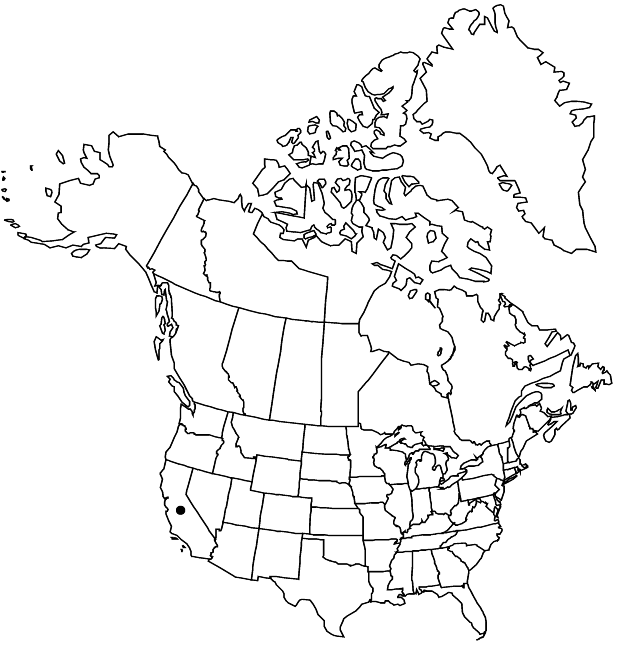Dudleya parva
Bull. S. Calif. Acad. Sci. 22: 5. 1923 ,.
Caudices often branching apically, 3–5 × 0.1–0.7 cm, (from root ca. 3 mm thick but strongly constricted irregularly), axillary branches absent. Leaves withering in early summer; rosettes 1–3, (in clumps), 5–10-leaved, 1–3 cm diam.; blade green, becoming purplish, linear to oblanceolate, 1.5–5 × 0.3–0.7 cm, 1.5–2 mm thick, base 0.5–1.1 cm wide, apex acute, subapiculate, surfaces not farinose, slightly glaucous. Inflorescences: cymes 2–3-branched, obpyramidal; branches not twisted (flowers on topside), simple or 1 times bifurcate, (3–5 cm wide); cincinni mostly 1–2, (simple), 5–12-flowered, not circinate, 3–8 cm; floral shoots 5–18 × 0.1–0.2 cm; leaves 10–20, ascending, triangular-ovate, 5–15 × 3–6 mm, apex acute. Pedicels erect, not bent in fruit, (stout), 1–3 mm. Flowers: calyx 3–5 × 3–5 mm; petals connate 1–2 mm, pale-yellow, sometimes red-lineolate, 8–12 × 2–3.5 mm, apex broadly acute, tips slightly outcurved; pistils connivent, erect. Unripe follicles erect. 2n = 34.
Phenology: Flowering late spring.
Habitat: Gravelly clay soil
Elevation: 100-400 m
Discussion
Of conservation concern.
Dudleya parva is known only from Ventura County; it is considered fairly threatened (California Native Plant Society, http://cnps.web.aplus.net/cgi-bin/inv/inventory.cgi). Plants reported as D. parva from San Luis Obispo County (R. F. Hoover 1965, 1970) appear to be a small form of D. abramsii subsp. bettinae.
Dudleya parva is distinguished by its small size and its fugacious rosette leaves. Mature plants look like seedlings flowering precociously. They are leafless in summer and fall, like D. cymosa subsp. marcescens and like members of subg. Hasseanthus. Flower structure, and particularly the insertion of the stamens, indicates that it is related to D. abramsii. The epipetalous filaments of D. parva are 4–9.5 mm and adnate 1–1.5 mm, the antisepalous ones are 5–10 mm, adnate 1.5–2 mm. Dudleya abramsii is a larger plant, with persistent rosettes of more numerous and usually larger leaves, with longer and more slender pedicels, and usually with a longer corolla tube.
Dudleya parva is in the Center for Plant Conservation’s National Collection of Endangered Plants as D. abramsii subsp. parva.
Selected References
None.
